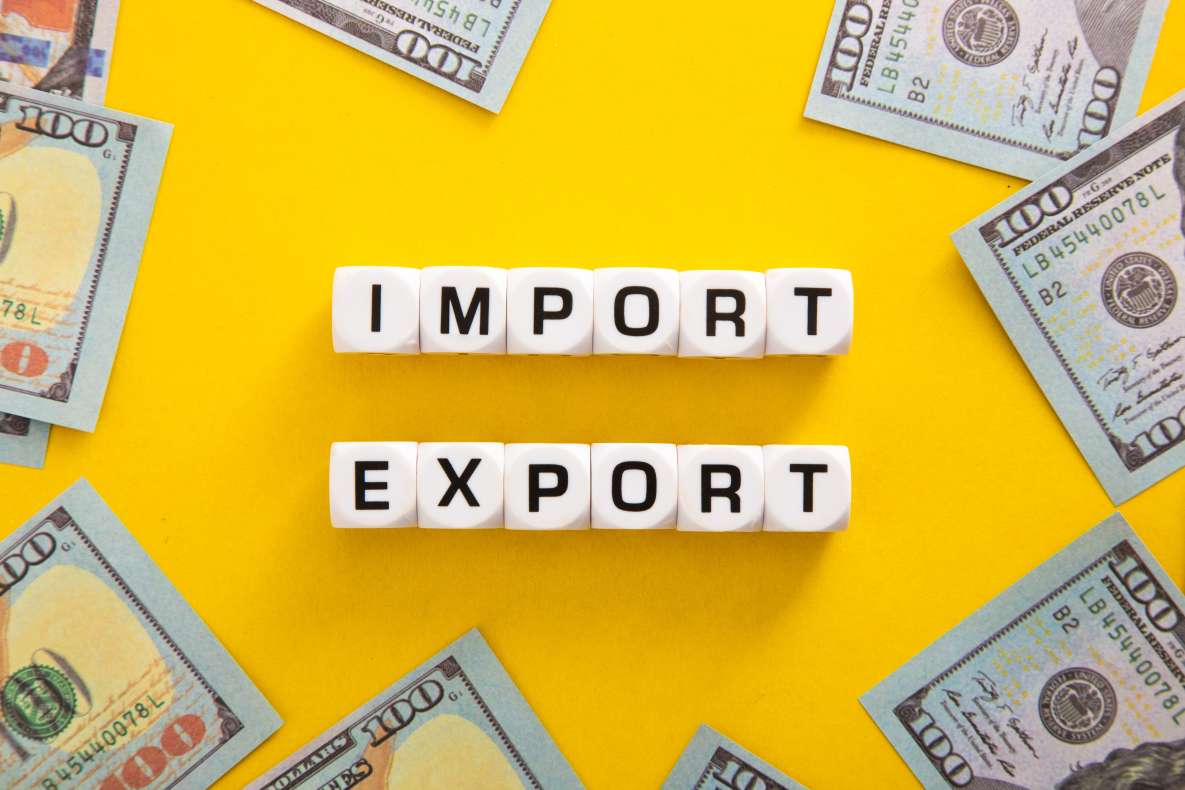What Is Trade Finance? A Detailed Guide for International Businesses

Trade finance is the backbone of global commerce. It refers to the range of financial instruments and products that companies use to facilitate international and domestic trade. At its core, trade finance bridges the gap between exporters and importers—ensuring that goods and services can move efficiently across borders and within national economies.
By mitigating the risks inherent in cross-border transactions—such as currency fluctuations, political instability, and counterparty default—trade finance serves as a critical enabler of the real economy. It provides businesses with the working capital, guarantees, and credit facilities needed to complete complex supply chain operations with confidence and speed. From raw materials to finished products, nearly every good that changes hands internationally relies on trade finance to some degree. Without it, global supply chains would slow—and in many sectors, come to a halt entirely.
Why Does Trade Finance Exist?
Trade finance exists to solve the complex financial and operational challenges inherent in cross-border trade. Unlike domestic ones, international trade transactions involve a heightened degree of risk, time delays, and regulatory complications—factors that can place significant strain on both exporters and importers.
1. Managing Cross-Border Risk
When goods cross borders, so do uncertainties. Differences in legal systems, political environments, payment standards, and business practices create friction that can threaten the completion of a transaction. Exporters may worry about payment default, while importers may fear non-delivery or poor product quality. These risks are magnified in emerging markets or volatile economies.
2. Addressing Working Capital Constraints
Trade is capital-intensive. Exporters often require pre-shipment financing to source raw materials or manufacture goods, while importers may need credit terms to manage inventory and cash flow before resale. Traditional payment methods, such as advance payment or open account, offer little protection or flexibility—frequently leaving one party overexposed.
3. The Strategic Role of Banks
Financial institutions play a pivotal role in trade finance by:
- Issuing guarantees and letters of credit to reduce default risk.
- Providing liquidity through instruments like factoring, forfaiting, and supply chain finance.
- Ensuring regulatory compliance across jurisdictions, particularly in high-risk or sanctioned markets.
By acting as trusted intermediaries, banks reduce friction and build trust between trading partners. Their ability to underwrite risk, extend credit, and navigate complex compliance environments makes trade finance not just a convenience—but a necessity.

How Does Trade Finance Work?
A typical trade finance transaction is a collaborative process involving several key stakeholders—each playing a critical role in facilitating a secure and seamless transaction. Whether dealing with bulk commodities, manufactured goods, or high-value capital equipment, the mechanics of trade finance follow a structured flow to mitigate risks.
Key Parties Involved
- Buyer (Importer): The entity purchasing goods, typically looking for favorable payment terms to preserve liquidity.
- Seller (Exporter): The party shipping goods or providing services, often seeking pre-shipment funding or payment assurance.
- Banks and Financial Institutions: These act as intermediaries, providing instruments that reduce counterparty risk, extend credit, and ensure payment or delivery compliance.
Typical Transaction Flow
While the specifics can vary by product and geography, most trade finance transactions involve the following steps:
- Contract Agreement: Buyer and seller agree on price, quantity, delivery terms, and payment method (e.g., letter of credit or open account).
- Bank Facilitation: The importer’s bank may issue a payment undertaking (such as a letter of credit), while the exporter’s bank may confirm, advise, or discount it.
- Goods Shipment: The exporter ships the goods, submitting shipping documents to the bank as proof of performance.
- Document Verification & Payment: The importer’s bank releases funds upon validation of compliance with the contract terms; alternatively, payment may be made on maturity in deferred arrangements.
- Settlement: Funds are transferred, and documents are released, completing the trade cycle.
What is Trade Finance? — Key Instruments and Solutions
Trade finance is not a one-size-fits-all discipline. It consists of a diverse set of instruments designed to manage risk, unlock capital, and support international commerce. These solutions range from centuries-old instruments like letters of credit to cutting-edge blockchain platforms redefining the future of trade.
Traditional Trade Finance Products
Traditional trade finance instruments have long underpinned the functioning of international and domestic commerce. They offer structured, legally enforceable mechanisms for managing performance and payment risk across jurisdictions—especially where trust, credit history, or legal recourse are limited. These products remain relevant not only due to their reliability, but because they can be tailored to suit complex commercial arrangements across sectors.
1. Letters of Credit (LCs)
Letters of Credit are among the most widely used instruments in global trade, especially in transactions where the parties are unfamiliar with each other or operate in high-risk markets.
How It Works: The buyer (importer) requests their bank to issue an LC in favor of the seller (exporter). The bank commits to pay the exporter upon presentation of specified documents (e.g., bill of lading, invoice, certificate of origin) that prove shipment and contractual performance.
Risk Mitigation: LCs transfer the risk of buyer non-payment from the exporter to the bank—provided documentation is compliant. In many cases, a confirmed LC is used, where a second bank (typically in the exporter’s country) adds its own payment undertaking.
Use Cases: Common in large capital goods transactions, emerging market trades, and new business relationships. Especially vital in sectors such as commodities, oil & gas, and infrastructure.
2. Documentary Collections
A simpler, lower-cost alternative to LCs, documentary collections are used when the exporter has a moderate level of trust in the importer.
- Documents Against Payment (D/P): Buyer pays to receive shipping documents.
- Documents Against Acceptance (D/A): Buyer accepts a bill of exchange, agreeing to pay at a later date.
- Bank Role: The banks act as intermediaries for document transfer but do not guarantee payment.
- Risk Profile: Less secure than LCs, but preferred in ongoing trade relationships where cost sensitivity matters.
3. Factoring & Forfaiting
Both factoring and forfaiting are financial tools that convert trade receivables into immediate cash, improving liquidity and reducing credit exposure. While they serve a similar function, their application differs in terms of transaction structure and duration.
Factoring
Factoring involves the sale of short-term receivables to a financial institution (the factor).
- With Recourse: The exporter remains liable if the buyer fails to pay.
- Without Recourse: The factor assumes full credit risk, offering greater protection to the exporter.
Factoring is commonly used by SMEs engaged in frequent, short-term B2B exports to reliable buyers. It improves cash flow without adding debt to the balance sheet.
Forfaiting
Forfaiting is used for medium- to long-term receivables, typically arising from large-ticket exports. The receivables are often backed by promissory notes or bills of exchange and sold to a forfaiter at a discount.
This instrument is frequently applied in capital goods exports, infrastructure projects, or government-to-government trade, where repayment terms can extend over several years.
4. Bank Guarantees
A bank guarantee is a contingent liability undertaken by a financial institution to compensate one party if the counterparty fails to meet specific contractual obligations. There are several forms of bank guarantees, each tailored to a specific risk within a contractual framework:
- Performance Guarantee: Ensures the buyer is compensated if the seller or contractor fails to deliver the agreed goods or services.
- Advance Payment Guarantee: Protects the buyer in cases where an upfront payment is made. If the supplier fails to perform, the guarantee secures repayment.
- Bid Bond (Tender Guarantee): Common in procurement tenders, this assures the buyer that the bidding party will enter into the contract if awarded, and not withdraw after selection.
Bank guarantees are typically irrevocable and on-demand, meaning the beneficiary can call on the guarantee without proving actual default—provided the claim meets the documentary requirements specified in the guarantee.

Finance-Driven Instruments
Traditional bank loans often fall short in meeting the nuanced timing and risk-sharing demands of global trade. Finance-driven trade instruments fill this gap by embedding capital solutions into the physical flow of goods and services.
Supply Chain Finance
Supply Chain Finance (SCF) is a buyer-led financing solution that enables suppliers to receive early payment on their invoices from a third-party financier. This structure allows suppliers to convert receivables into cash immediately after invoice approval, while buyers retain the benefit of extended payment terms, often without negatively impacting supplier relationships.
Inventory and Pre-Shipment Finance
Inventory and pre-shipment finance solutions address one of the most critical challenges in trade: funding the production and preparation of goods before shipment and payment occur. Pre-shipment finance solves this gap by offering short-term working capital loans secured against confirmed sales orders or contracts.
Export Credit and Trade Credit Insurance
Export credit agencies often face heightened risk when selling into unfamiliar or unstable markets—particularly in regions with volatile currencies, weak legal enforcement, or political uncertainty. Export credit insurance provides critical protection against both commercial and sovereign default scenarios, allowing exporters to trade confidently while preserving their receivables.
Modern & Digital Trade Finance Solutions
Emerging technologies have revolutionized trade finance, transitioning from manual, paper-intensive processes to agile, integrated platforms that enhance speed, transparency, and security.
Blockchain-Based Trade Platforms
Blockchain-based trade networks like Contour, komgo, and we.trade leverage distributed ledger technology (DLT) to digitize letters of credit and KYC workflows. Participants such as Tata Power benefit from e‑LCs that cut processing times from days to under 24 hours. Komgo, originally built on blockchain, now offers digital LCs, SBLCs, receivables discounting, and a KYC module, helping commodity traders streamline document exchange and reduce fraud. While some DLT initiatives have faced hurdles, platforms like Komgo are refining their models to achieve real-world utility.
Trade Digitization via AI & IoT
AI-powered tools automate key compliance tasks—such as sanctions screening, anomaly detection in documents, and risk scoring. When combined with IoT-enabled shipment tracking, lenders can verify physical progress and trigger financing at defined milestones, such as loading or customs clearance. This integration fosters real-time visibility and operational control across the trade lifecycle.
Fintech Disruptors
Fintech firms such as Drip Capital, Incomlend, and CredAble are effectively bridging the SME trade finance gap. Drip Capital uses data analytics and digital underwriting to provide collateral-free export finance in India, Mexico, and the U.S., having funded over $6.3 billion in trade receivables. Similarly, platforms like GetVantage and Kriya enable revenue-based, invoice, and supply chain financing to underserved SME markets

Benefits of Trade Finance
Trade finance plays a pivotal role in modern commerce by addressing the structural inefficiencies and risk exposures inherent in cross-border transactions. Its strategic value lies not only in enabling global trade flows but also in improving the financial health of all parties involved—from exporters and importers to banks and fintech providers.
Advantages for Buyers and Sellers
- Risk Assumption: Trade finance solutions, such as letters of credit and guarantees, transfer credit and performance risk from counterparties to reputable financial institutions. This reduces uncertainty and ensures greater transactional security.
- Improved Working Capital: By converting receivables into immediate cash and offering deferred payment terms, trade finance enhances liquidity. Exporters gain faster access to funds, while importers can optimize their cash cycles without straining supplier relationships.
- Automation and Transparency: Modern trade platforms increasingly incorporate digital tools that automate document flows, track shipment status, and reconcile payment data. This reduces manual intervention, minimizes errors, and increases transparency across the supply chain.
- Cost Reduction: Through instruments like supply chain finance and documentary collections, both buyers and sellers can reduce the cost of financing and transaction execution. Lower operational friction translates into measurable savings over time.
Benefits for Financial Institutions
- Enhanced Client Relationships: By offering tailored trade finance solutions, banks and fintech lenders position themselves as strategic partners to corporate clients. These services deepen engagement, build trust, and open opportunities for cross-selling other financial products.
- Data Integration and Risk Insights: Trade finance transactions generate rich datasets—from invoice histories to payment behavior—which can be integrated into advanced credit and risk models. Institutions gain a sharper understanding of client performance, enabling better decision-making and pricing.
- Reduced Processing Costs: Digitization of trade documentation and increased use of blockchain, APIs, and cloud-based platforms significantly reduce back-office processing costs. This creates operational efficiencies while enhancing compliance and auditability in a heavily regulated environment.
International Trade Administration and Regulation
Robust institutions and trade agreements form the backbone of global commerce. They provide a framework of rules, standards, and enforcement mechanisms that promote fairness, transparency, and market access—elements essential to sustainable trade finance.
The World Trade Organization (WTO)
The World Trade Organization (WTO) is the principal international body governing trade rules and dispute resolution. Its core mission is to reduce tariffs, eliminate discriminatory practices, and uphold a stable global trading system. Member nations rely on the WTO’s agreements to settle disputes and to receive technical assistance that helps integrate developing economies into the trading system.
Beyond policymaking, the WTO plays a pivotal role in supporting trade finance. It collaborates with institutions like the International Finance Corporation and the Financial Stability Board to access trade finance—especially in emerging markets—ensuring continuity of credit even amid regulatory tightening.
The International Chamber of Commerce (ICC)
The International Chamber of Commerce (ICC) functions as the private-sector counterpart to the WTO, creating widely adopted frameworks that standardize global trade finance practices. Its seminal publications—the Uniform Customs and Practice for Documentary Credits (UCP 600) and Uniform Rules for Demand Guarantees (URDG)—have become the foundation for cross-border banking and commercial documentation.
ICC’s objective extends beyond rule-making. It provides dispute-resolution mechanisms like DOCDEX, enabling parties to resolve documentary disagreements swiftly and cost-effectively—without resorting to litigation. It also promotes capacity building, digital innovation, and collaboration between banks, policymakers, and market participants.
Key Trade Agreements: GATT, NAFTA, and Their Successors
General Agreement on Tariffs and Trade (GATT): Signed in 1947, the General Agreement on Tariffs and Trade (GATT) aimed to remove trade barriers such as tariffs and quotas. Over decades, successive negotiation rounds brought average tariffs down from roughly 22% to around 5% by the late 1990s—establishing a foundation for the WTO to emerge in 1995
North American Free Trade Agreement (NAFTA) & USMCA: NAFTA, effective January 1, 1994, created a trilateral free-trade zone between the U.S., Canada, and Mexico by reducing tariffs and non-tariff barriers. It significantly increased cross-border trade, especially in automotive, agricultural, and manufacturing sectors.
In 2020, NAFTA was replaced by the United States–Mexico–Canada Agreement (USMCA), which retained duty-free trade while introducing modern provisions on digital commerce, higher labor and environmental standards, and auto-sector content regulations.
Digital Transformation in Trade Finance
Digital transformation is redefining trade finance, shifting the industry from paper-heavy processes to efficient, secure, and transparent ecosystems.
Adoption of Electronic Trade Documents, Blockchain, AI & ML
Financial institutions are increasingly replacing cumbersome paper-based workflows with electronic trade documents, which streamline processes and reduce errors. Blockchain and distributed ledger technologies (DLT) provide decentralized, tamper-proof ledgers and smart contracts that automate conditional payments—such as the release of funds upon receipt confirmation—with real-time traceability.
AI and ML further enhance trade finance. They automate document processing, perform predictive risk assessment, and detect anomalies that may signal fraud. Institutions report reductions in processing times by over 60–70% and substantial savings through reduced fraud and operational costs.
How Digitalization Enhances Efficiency, Reduces Fraud & Streamlines Processes
- Efficiency gains: Automation cuts manual textbook workflows, slashing transaction times from days or weeks to hours—even minutes.
- Fraud reduction: Immutable ledgers and smart contracts mitigate document tampering and payment fraud.
- Compliance and transparency: Shared digital records simplify KYC/AML, sanctions screening, and audits, often in real time.
- Customer experience: Buyers and sellers gain visibility and control—a digital dashboard tracks document submission, approval, and fund release step by step.
Emerging Technologies Shaping the Future
- Smart contracts on blockchain platforms automate settlements based on verified logistics and shipment data.
- IoT integration is enabling real-time proof of delivery and condition monitoring—supporting automated financing triggers.
- Cloud computing ensures seamless platform interoperability, scalability, and data accessibility.
- CBDCs and tokenized assets, such as Swiss Central Bank pilots, promise direct digital settlement for trade flows and securities trading.
Emerging Technologies Shaping the Future
- Smart contracts on blockchain platforms automate settlements based on verified logistics and shipment data.
- IoT integration is enabling real-time proof of delivery and condition monitoring—supporting automated financing triggers.
- Cloud computing ensures seamless platform interoperability, scalability, and data accessibility
- CBDCs and tokenized assets, such as Swiss Central Bank pilots, promise direct digital settlement for trade flows and securities trading.
How Suisse Bank Helps
Suisse Bank is among the forward-thinking institutions embracing digital innovation in trade finance:
- It has digitized Letters of Credit (LCs), enabling full electronic documentation—streamlining LC workflows and eliminating delays
- The bank provides a crypto wallet—supporting clients with enhanced fraud control and freedom to transact using cryptocurrency.
The Future of Trade Finance
The trade finance landscape is evolving rapidly. Advancements in digital technology, shifts in geopolitical trade policy, the emergence of CBDCs, and heightened focus on resilience and sustainability are collectively reshaping how global commerce is financed and fulfilled.
Digitalization, Alternative Financing & AI Integration
Digital transformation in trade finance is accelerating. Electronic documents, blockchain-based smart contracts, and AI-driven platforms are offering unprecedented efficiency, transparency, and fraud reduction. AI and ML are enhancing risk assessment, document processing, and predictive analytics, making financing faster, safer, and more intelligent.
Sustainability and ESG Focus
Environmental, Social, and Governance (ESG) considerations are no longer optional—they’re becoming integral to trade finance. Green-linked loans, sustainable supply chain initiatives, and ESG-screened counterparties are gaining prominence. Financial institutions and corporate clients are aligning their financing strategies with sustainability goals to meet regulatory standards and market expectations.
Global Policy, Protectionism & Regulatory Shifts
Evolving global trade policies are reshaping financing dynamics. Recent tariff discussions between the EU and U.S. reflect ongoing protectionist pressures. Similarly, IMF reports signal rising financial stability risks associated with trade disruptions, prompting regulators to enhance oversight in trade finance. Companies and banks must adapt by diversifying trade corridors and complying with evolving trade rules.
Role of CBDCs & Supply Chain Resilience
Central Bank Digital Currencies (CBDCs) are emerging as potential game-changers in trade settlement. Pilot programs by central banks and platforms like SWIFT aim to enable real-time, programmable cross-border payments. Simultaneously, firms are investing in resilience through digital infrastructure—leveraging blockchain, AI, and diversified supply chains to safeguard continuity during disruptions.

Charting the Future of Trade Finance
Trade finance stands at the crossroads of innovation and necessity—empowering businesses to navigate global commerce with confidence, agility, and trust. From traditional instruments like letters of credit and bank guarantees to cutting-edge blockchain platforms and AI-enabled compliance tools, the evolution of trade finance is not merely a technological shift—it is a strategic transformation. For importers, exporters, and financial institutions alike, the message is clear: those who embrace smarter, more integrated trade finance solutions will be better positioned to manage risk, unlock liquidity, and capture growth in an increasingly interconnected world.
At Suisse Bank, we understand that success in international trade depends on speed, security, and foresight. That’s why we offer a comprehensive suite of trade finance services—combining traditional expertise with modern innovation to serve your business needs across borders. Whether you're an SME expanding globally or a large corporation optimizing complex trade flows, we are ready to support your journey with personalized solutions, digital tools, and a commitment to excellence.
Become our client today, and let us help you trade with confidence—digitally, securely, and globally.

